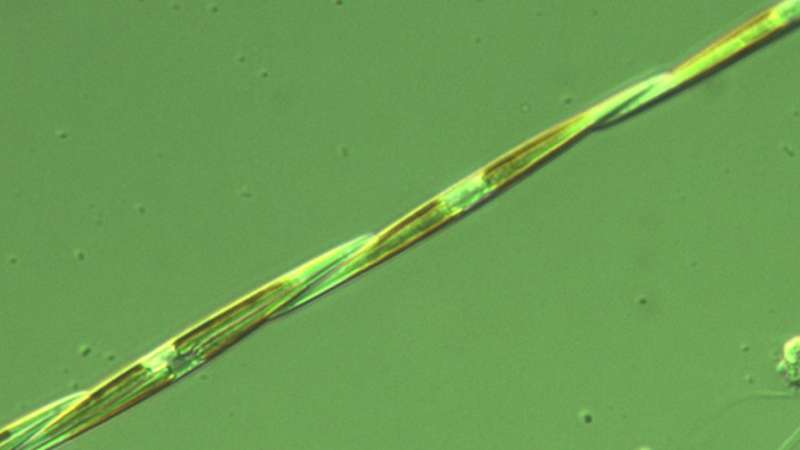Toxic 'marine snow' can sink quickly, persist at ocean depths

In a new study, researchers from North Carolina State University found that a specific neurotoxin can persist and accumulate in "marine snow" formed by the algae Pseudo-nitzschia, and that this marine snow can reach significant depths quickly. These findings have implications for food safety policies in areas affected by toxic marine algal blooms.
When algae cells run out of nutrients and start to die, they clump together and sink as marine snow. The algae and its marine snow aggregates can serve as a major food source for other forms of marine life like plankton-eating fish and shellfish. Pseudo-nitzschia is a microscopic algae that occurs naturally in coastal waters, and is of particular concern due to its production of the neurotoxin domoic acid. When domoic acid-containing Pseudo-nitzschia enter the food chain, humans can accidentally consume it via shellfish. This type of shellfish poisoning, known as amnesic shellfish poisoning, can cause neurological and gastrointestinal symptoms ranging from short-term memory loss to - in rare cases - death.
Astrid Schnetzer, associate professor of marine, earth and atmospheric sciences at NC State, wanted to know how domoic acid gets transported to depth via marine snow after a toxic algal bloom and how long it may persist. In a previous study she showed that marine snow can reach depths of several hundred meters within a few days, which contradicted previous theories suggesting that it might dissipate and dissolve long before reaching the ocean floor.
"Recent large toxic blooms off of the California coast and the attendant damage to local shellfish and the shellfish economy underscore the importance of understanding how long the marine snow remains toxic, how deep it can go and how long marine organisms are exposed to the toxin," Schnetzer says. "The fact that high levels of domoic acid can be found in marine life months after a bloom demonstrate the need for deciphering the mechanisms by which domoic acid reaches the seafloor."
Schnetzer and colleagues created their own toxic algal bloom in the lab using P. australis algae, one of the most toxic Pseudo-nitzschia species and one that blooms along the U.S. West Coast. They found that after two weeks, toxic marine snow from this algae could sink at rates of over 100 meters per day. Domoic acid did not dissipate appreciably during the sinking period, retaining up to 80 percent of its original toxicity.
"This study confirms that marine snow is a major vector in terms of getting domoic acid to depth," Schnetzer says. "Our future work will focus on the ways in which smaller organisms that feed on marine snow may be affected by the toxicity, and how that in turn can affect the larger food web."
The research appears in Harmful Algae.
More information: Astrid Schnetzer et al, Marine snow formation by the toxin-producing diatom, Pseudo-nitzschia australis, Harmful Algae (2017). DOI: 10.1016/j.hal.2016.11.008
Provided by North Carolina State University




















